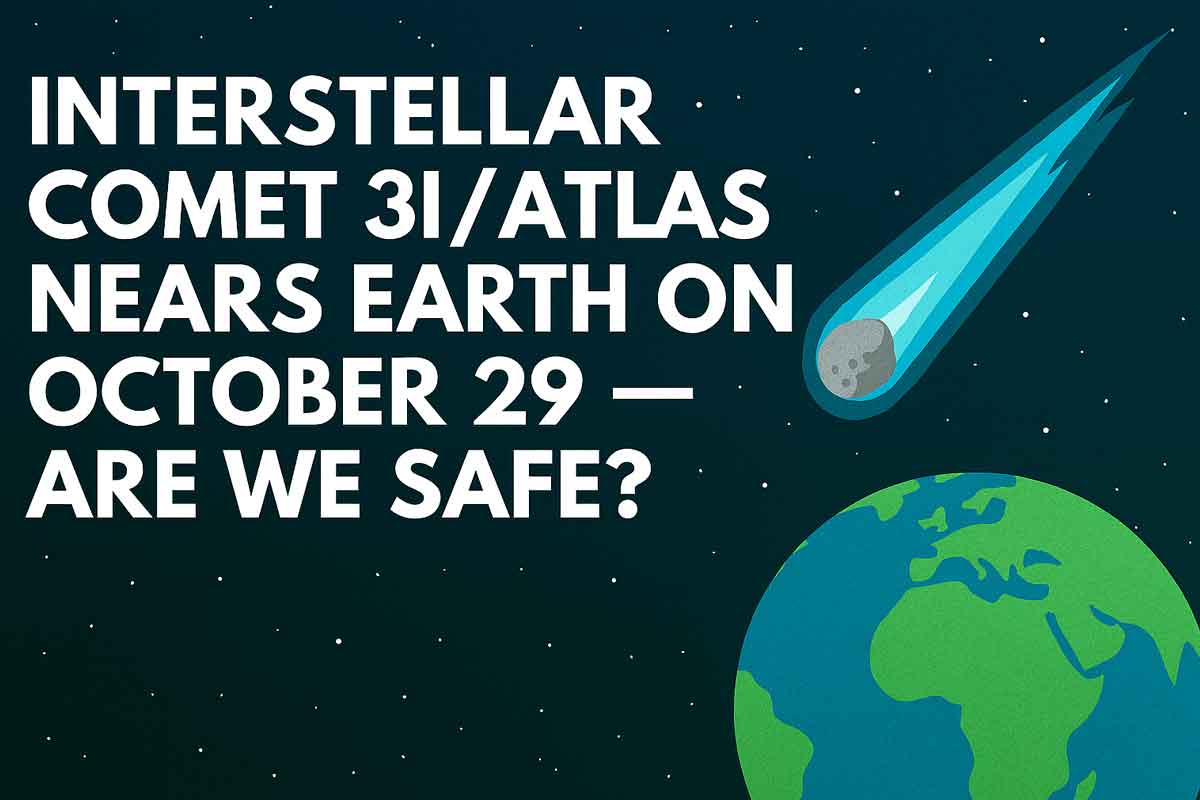3I/ATLAS is a confirmed interstellar comet — only the third object known to come from another star system. It has attracted broad scientific attention because of its unusual orbit, composition, and visible activity as it approaches the inner Solar System.
3I/ATLAS Orbit and Features
The comet follows a strongly hyperbolic trajectory, indicating an origin outside our Solar System. It will reach perihelion (closest point to the Sun) around October 29–30, 2025, when solar heating is expected to drive outgassing and produce a more distinct coma and tail. Observatories worldwide are monitoring changes in brightness and the structure of the tail.
How 3I/ATLAS Was Discovered
3I/ATLAS was discovered by the ATLAS survey telescope in Chile in mid-2025. Rapid follow-up observations from professional and amateur groups confirmed the object’s high incoming speed and hyperbolic orbit, which signaled its interstellar origin. Since its discovery, telescopes including Hubble and several ground-based observatories have captured detailed views of its coma and dust cocoon.
How Close Will 3I/ATLAS Come to Earth?
3I/ATLAS will not come close enough to pose any danger to Earth. Current trajectory solutions place its nearest approach at roughly 1.6–1.8 astronomical units (about 150–170 million miles) from our planet, with perihelion near late October 2025. NASA and other space agencies have confirmed there is no impact risk.
What Makes 3I/ATLAS Unique?
- It is only the third confirmed interstellar object, following ’Oumuamua and 2I/Borisov, making every observation scientifically valuable.
- Early data suggest unusual composition and a pronounced dust cocoon or teardrop-shaped envelope.
- Its size and speed appear larger than prior interstellar visitors, offering a rare chance to study primordial material from another star system.
Structure of 3I/ATLAS
Images show a compact nucleus surrounded by a diffuse coma and an evolving tail. Spectroscopic observations aim to identify volatile compounds and dust properties. Early ultraviolet and optical data have already detected traces consistent with water-related species, helping astronomers understand its composition and structure.
Scientists Race to Decode the Tail and Orbit
Because 3I/ATLAS is interstellar, astronomers are coordinating rapid observations across multiple wavelengths. Teams are mapping its orbit precisely, tracking changes in brightness and tail morphology, and searching for any fragments or unusual outgassing behavior that could reveal its origin. International observatories and space missions are contributing time and resources to this effort.
Can 3I/ATLAS Be Seen Without a Telescope?
Most forecasts suggest 3I/ATLAS will remain faint to the naked eye for most viewers. It will be best observed with binoculars or small to medium telescopes, and many observatories plan to livestream its closest approach. Visibility will depend on local sky conditions and the comet’s actual brightening as it nears perihelion.
Safety and Tips for Sky-Watchers
- There is no safety risk from the comet — it poses no impact threat to Earth.
- Use binoculars or a small telescope for the best views; check local astronomy clubs for observing events.
- Watch during late night or pre-dawn hours when the sky is darkest and the comet is higher above the horizon.
- Follow official updates from observatories for coordinates and brightness forecasts.
Disclaimer
This article summarizes current observations and published trajectory data. Comet behavior can change as it approaches the Sun, and updated details may be released by scientific organizations. Readers are advised to follow official sources like NASA and ESA for the latest information.
FAQs
Q1: Will 3I/ATLAS hit Earth?
Answer: No. All trajectory analyses show that the comet will remain far from Earth, with no impact threat based on current data.
Q2: Can I see 3I/ATLAS with my naked eye?
Answer: Most likely not. The comet is expected to be faint and best visible through binoculars or telescopes under clear, dark skies.
Q3: Why are scientists so interested in 3I/ATLAS?
Answer: As an interstellar visitor, 3I/ATLAS offers rare insights into the material and chemistry of another star system, helping researchers understand the diversity of cosmic bodies beyond our Solar System.



